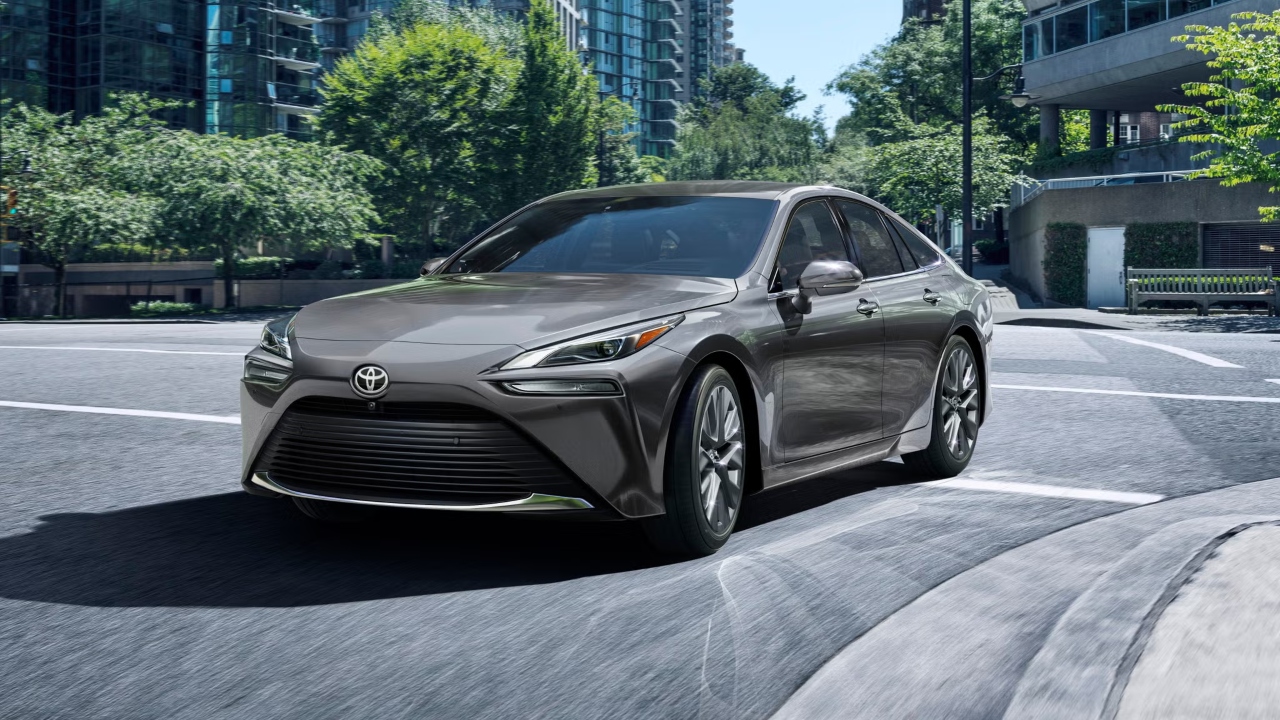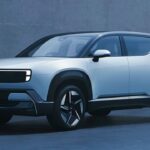Hydrogen Revolution 2025: India is moving fast toward clean and green energy. After big growth in electric vehicles, the country is now entering a new era Hydrogen Fuel Cell Vehicles (FCEVs). These vehicles run on hydrogen gas and produce zero pollution. In 2025, India is set to take major steps in this revolution. Many companies, including Tata Motors, Toyota, Mahindra, and Ashok Leyland, are testing or launching hydrogen-powered vehicles.
Hydrogen technology can change the future of transport. It offers long driving range, fast refuelling, and clean emissions. Because of these reasons, fuel cell vehicles are slowly becoming popular in India.
What Is a Hydrogen Fuel Cell Vehicle?
India’s Hydrogen Revolution 2025: How Fuel Cell Vehicles Are Changing the Auto Industry A hydrogen fuel cell vehicle uses hydrogen gas to produce electricity. This electricity powers the motor that moves the vehicle. The best part is that it does not release smoke or harmful gases. The only output is water vapour.
How It Works (Simple Explanation):
- Hydrogen gas goes into the fuel cell.
- It mixes with oxygen from the air.
- A chemical reaction takes place.
- Electricity is produced.
- The electric motor uses this electricity to run the car.
It is clean, safe, and efficient.
Why Hydrogen Vehicles Are Important for India
India imports a large amount of oil every year. This costs a lot of money. Hydrogen vehicles can help reduce this dependence. They also reduce air pollution, which is a big problem in cities.
Here are the main benefits:
1. Zero Pollution
India’s Hydrogen Revolution 2025: How Fuel Cell Vehicles Are Changing the Auto Industry Fuel cell vehicles do not release smoke or CO₂. This helps improve the air quality.
2. Long Driving Range
Hydrogen vehicles can travel 600–700 km on a full tank — more than many electric cars.
3. Fast Refuelling
Hydrogen refuelling takes only 3–5 minutes, similar to petrol or diesel.
4. Light Weight
Hydrogen tanks are lighter than large EV batteries, which gives better performance.
5. Clean Energy Future
India aims to become a global leader in green hydrogen production.
Government Efforts in 2025
India’s Hydrogen Revolution 2025: How Fuel Cell Vehicles Are Changing the Auto Industry The Government of India is supporting hydrogen technology under the National Green Hydrogen Mission 2025. The target is to make India a major producer and exporter of hydrogen.
Key steps include:
- Plan to build hydrogen fuel stations along highways.
- Support for hydrogen buses, trucks, and cars.
- Funding for research and development.
- Encouraging companies to adopt hydrogen technology.
In 2025, several pilot projects are being tested in Delhi, Mumbai, Bengaluru, and Gujarat.
Hydrogen Vehicles Coming to India
India’s Hydrogen Revolution 2025: How Fuel Cell Vehicles Are Changing the Auto Industry Many auto companies have started working on hydrogen fuel cell cars and buses.
Toyota Mirai
The Toyota Mirai is one of the first hydrogen cars being tested in India. It offers:
- Around 650 km range
- Fast refuelling
- Zero pollution
Tata Hydrogen Bus
Tata Motors is testing hydrogen buses for city transport.
Ashok Leyland Hydrogen Trucks
Ashok Leyland is developing hydrogen trucks for long-distance transport.
Mahindra Hydrogen SUVs
Mahindra has also announced plans to work on hydrogen-powered SUVs in the future.
Difference Between EVs and Hydrogen Fuel Cell Vehicles
Here is a simple table comparing both:
| Feature | Electric Vehicles (EVs) | Hydrogen Fuel Cell Vehicles (FCEVs) |
|---|---|---|
| Energy Source | Battery | Hydrogen Gas |
| Pollution | Zero | Zero |
| Refuelling Time | 1–4 hours | 3–5 minutes |
| Range | 200–500 km | 600–700 km |
| Weight | Heavy battery | Lighter tanks |
| Cost | Mostly cheaper | More expensive today |
| Infrastructure | Many charging stations | Very few hydrogen stations |
Challenges India Still Faces
Even though hydrogen vehicles are good, India still has some challenges before they can become common.
1. High Cost
Hydrogen cars are costly because the technology is new.
2. Lack of Fuel Stations
India has very few hydrogen fuel stations right now.
3. Safety Concerns
Hydrogen must be stored carefully, though modern systems are very safe.
4. Need for Green Hydrogen
To make hydrogen clean, it must be produced using solar or wind energy.
Future of Hydrogen in India
The future looks bright. By 2030, India plans to build many hydrogen fuel stations across highways. Hydrogen buses and trucks may become very common. Private cars will also start using this technology as the cost becomes cheaper.
Hydrogen can also be used in trains, ships, and factories. This can reduce pollution and help India become energy independent.
Conclusion
Hydrogen fuel cell vehicles are the next big step in India’s clean mobility journey. In 2025, India has already started the hydrogen revolution with strong government support and new technology. These vehicles offer long range, fast refuelling, and zero pollution. Though there are some challenges, the future looks promising.
Hydrogen can truly change the auto industry and make India a leader in green energy. As more companies adopt this technology, hydrogen vehicles may soon become a common sight on Indian roads.






